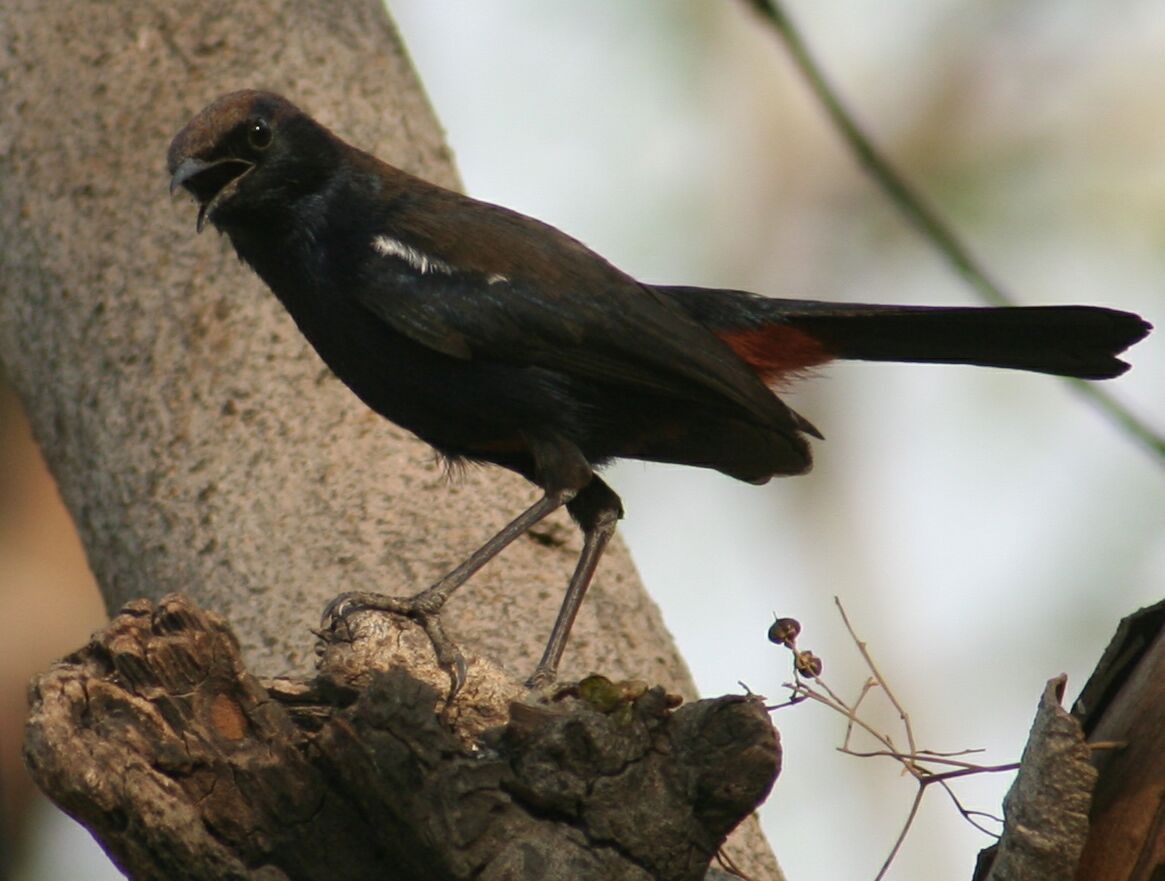
The Indian robin (saxicoloides fulicatus cambaiensis) is a small black bird, frequently seen in our gardens and woods. It will often be hopping or flitting about on or near the ground.
Here are two images of the Indian Robin. It will often hold its tail up,
revealing the
rusty red "vent" under the tail. The "vent" is an important identifying
feature in many birds, e.g. the red-vented bulbul.
the pied bushchat, etc.

The same bird can take a big breath and become so much plumper... So beware of matching birds by shape!
The colouration is mostly black, though the top is a more brownish-grey. The south Indian race (fulicatus fulicatus) is black on top as well. The male has a white patch on the wing - you can see a hint of it when folded - it's more prominent when flying. The female is not black at all but a light brown with paler belly and doesn't have a white patch.
Salim Ali (12th ed.) has this to say about the Indian Robin's habits:
Familiar and confiding. Frequents stony scrub country around towns and villages, commonly perching on thatched roofs of huts and entering verandas to pick up insects. Hops along the ground, mounting a rock, termite mound or fencepost and tossing upward the jaunty cocked tail. The male utters some cheery notes - but no song as such - chiefly during courtship display.
They are quite commmon on our lawns and gardens and wooded areas. They nest from April to June. They are locally known as Kalchuri (Hindi); Dachko (Bhil); Deoli, Kali deva (Gujarati), Chirak (Marathi) Nalanchi (Telugu), Wannatikuruvi (Tamil, washerman bird),.